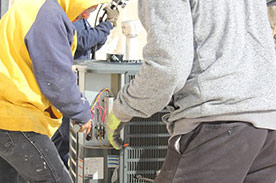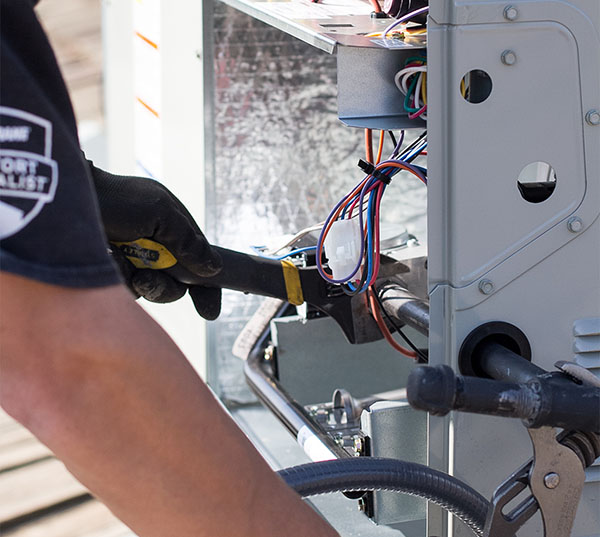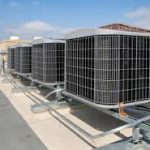Having a boiler or furnace with a flawed heat exchanger can allow Carbon Monoxide to leak within the home. Many homeowners are unaware of the fact and leave themselves in great danger. Homeowner’s that have their heating system properly maintained each year receive a heat exchanger inspection and a tune-up. What about the homes that do not? Would you be able to walk into your basment and tell if your heat exchanger was working properly?
Four Signs of a Flawed Heat Exchanger
1. Abnormal Flame: Checking your heat exchanger for flaws is the smart thing to do. Specifically, the flame is a great indication of funcitonality. A proper flame should burn clean and blue. If the flame is unstable and tends to jump around there may be a problem. If the flame is not the expected color of blue, a crack in the heat exchanger may be the root of the issue.
2. Cracks/Rust on Metal: Any exposure to water or rust on any of the metal components can have a negative affect on your heating system. Having a professional inspection by Four Seasons can help to alleviate this problem. We train every technician to properly assess each heat exchanger very carefully when performing furnace maintenance. When the heat exchanger becomes damaged, the law states that the company must shut that unit down and encourage the customer to make a new purchase.
3. High Carbon Monoxide Levels: It is very important to note that every home is required by law to have a carbon monoxide detector. This is to ensure that the safety and health of your family remains protected. The proper place to install a carbon monoxide detector is on each level of the home towards the bottom of the wall. If the detector ever gives the signal that Carbon Monoxide is being leaked, call your fire department immediately and exit the home until they arrive. A main reason carbon monoxide leaks into the home is the result a cracked heat exchanger.
4. Soot Buildup: Improper combustion results in soot buildup and is directly related to a flawed heat exchanger. If this seems to be the problem, a black resin buildup will occur on the inside of the heating system anywhere around where the flaw is prevalent.






